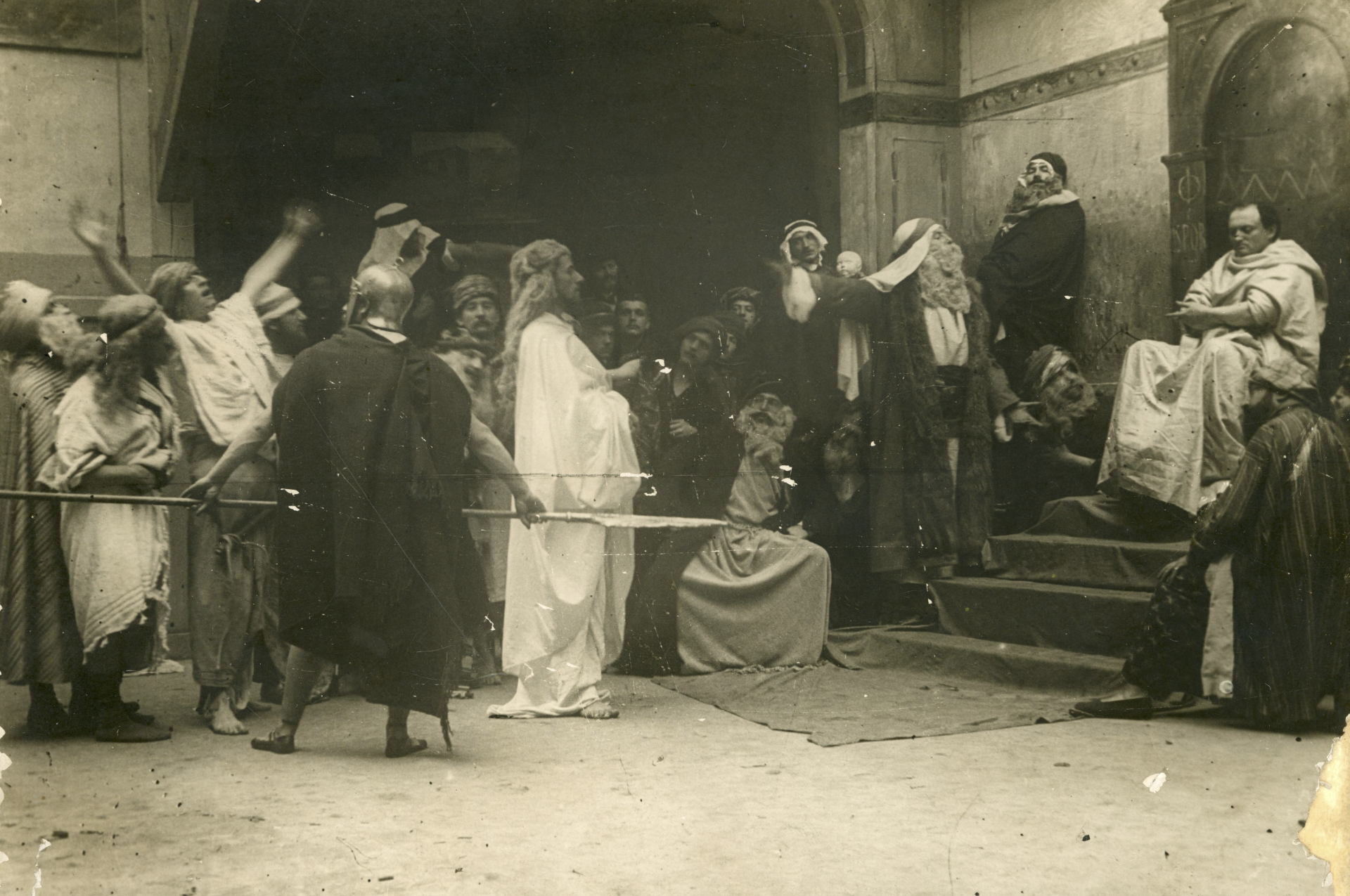The "Colossal" Paintings and World Renown
CHRIST BEFORE PILATE (REDUCTION)
MUNKÁCSY Mihály
(1844–1900)
CHRIST BEFORE PILATE (REDUCTION)
1881
Oil on canvas
Szépművészeti Múzeum – Magyar Nemzeti Galéria
Museum of Fine Arts – Hungarian National Gallery, Budapest
Inv. no. FK4812
The 1880s marked the culmination of Munkácsy's career. After the success of Milton, his art dealer encouraged him to turn to the story of the Passion of Christ, a theme popular among contemporary painters because of its enduring appeal.
According to the biblical narrative, having been found guilty by his accusers, Jesus was sentenced to death by the Jewish high priests, led by Caiaphas, who turned to the Roman governor, Pontius Pilate, to carry out the sentence. The artist has depicted the first encounter between Christ and Pilate - the moment at which Pilate wonders whether to give in to the high priests' demands and condemn the Messiah, who is innocent according to Roman law. With great psychological insight, Munkácsy has captured the climactic moment the three-way conflict between Jesus, unwavering in his mission, and the indecisive Roman governor; between Christ and his accusers; and finally, between Pilate and the crowd. The composition and its expressive qualities evoked a powerful response among audiences: we know from contemporary accounts that believers knelt in prayer before the painting.
Munkácsy produced countless drawings, oil sketches, and figure studies for the work: in the interests of historical authenticity, he hired models whom he dressed in ancient costume and arranged in this striking tableau. The work shown here is a so-called reduction - a half-size version, produced roughly at the same time as the large-scale work (in 1881), and likewise commissioned by Sedelmeyer. The large painting, together with Golgotha, was shown in a pavilion in the garden of Sedelmeyer's own mansion in Paris, where it attracted around 300,000 visitors.

